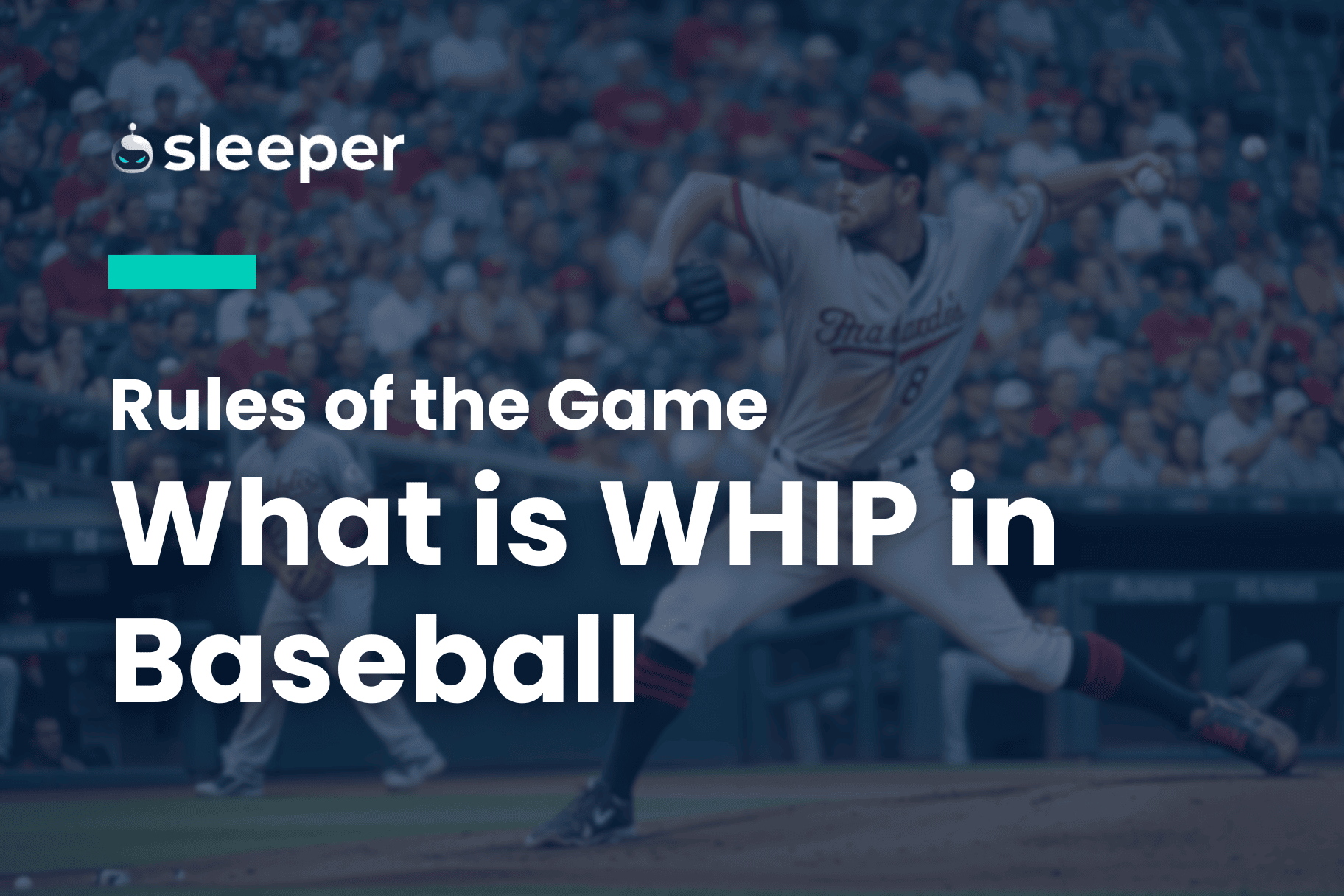Have you ever heard someone talk about a pitcher's "WHIP" in baseball and felt a little lost? It’s a term that gets thrown around quite a bit, yet its meaning might not be immediately clear to everyone. You might think of a whip as a tool, perhaps something used in the past to encourage animals to learn, or even a political figure in a party who gathers support. That, is actually quite different from what it means in the baseball world.
The word "whip" has many meanings in our language, doesn't it? For example, someone might say a person is "smart as a whip," which is kind of a play on words, as my text suggests. Historically, whips were sometimes thought to help animals become more intelligent, or at least to follow commands better. But in baseball, when we talk about WHIP, we're not talking about any of those things, not even a physical switch used to strike something lightly, as in the context of a mischievous tom, or a dance hit, you know.
So, what does this specific term mean when you are watching a game or looking at player statistics? In baseball, WHIP stands for something very particular, a way to measure how well a pitcher controls the game. It’s a key stat that helps fans and analysts alike understand a pitcher’s effectiveness on the mound. We will explore this important baseball measure, so, you can understand it better.
Table of Contents
- What WHIP Stands For: The Basics
- Breaking Down the Formula: Walks and Hits
- Understanding Innings Pitched (IP)
- How WHIP Is Calculated: Putting It Together
- Why WHIP Matters: A Pitcher's Control Story
- Good WHIP, Bad WHIP: What the Numbers Suggest
- WHIP Compared to Other Pitching Stats
- How Fans Use WHIP
- Frequently Asked Questions
What WHIP Stands For: The Basics
When you hear about WHIP in baseball, it's an acronym. It stands for Walks plus Hits per Innings Pitched. This measure gives us a snapshot of how many base runners a pitcher allows per inning. It's a way to assess a pitcher's ability to keep players off the bases, which is, you know, a pretty big deal.
A lower WHIP figure means a pitcher is doing a better job of preventing batters from reaching base. This is a sign of a pitcher who has good command over their pitches. They are, in a way, controlling the game's flow very well, which is what every team wants from its pitchers, obviously.
The stat has been around for some time, gaining more attention as baseball analysis grew more sophisticated. It offers a look at a pitcher's effectiveness that goes beyond just how many runs they give up. It focuses on the raw number of baserunners, which is quite important.
Breaking Down the Formula: Walks and Hits
To really get a grip on WHIP, we need to look at its parts. The "W" and "H" in WHIP stand for Walks and Hits. These are the two main ways batters get on base without an error or a hit by pitch. Understanding each component helps clarify the overall measure, in a way.
Both walks and hits represent instances where a pitcher failed to get an out and allowed a batter to reach base. Limiting these is a pitcher's main job, as a matter of fact. A pitcher with a lower count of walks and hits will, generally speaking, have a lower WHIP. This is a direct measure of their control, you know.
Walks (BB): The Free Passes
A walk, also known as a base on balls (BB), happens when a pitcher throws four pitches outside the strike zone to a single batter. The batter then gets to go to first base without having to hit the ball. These are often called "free passes" because the batter didn't earn their way on base with a hit, so.
Walks are a sign that a pitcher might be struggling with control. They can put runners on base without the defense even making a play. This puts pressure on the pitcher and the defense, making it easier for the other team to score runs. A pitcher who gives up many walks often faces more trouble, you see.
Limiting walks is a clear sign of a pitcher's command. It means they are throwing pitches within the strike zone and forcing batters to swing. This, generally, leads to more outs and fewer baserunners, which is the goal. So, a low number of walks is a good thing for a pitcher's WHIP, too it's almost a given.
Hits (H): The Base Knocks
A hit (H) occurs when a batter strikes the ball and reaches base safely, without the help of an error from the defense. Hits can be singles, doubles, triples, or home runs. They are, of course, a fundamental part of the game and how teams score runs, you know.
While hits are a part of baseball, a pitcher's goal is to limit them. A pitcher who allows many hits is giving up many opportunities for the opposing team to move runners around the bases and score. This puts their team in a difficult spot, as a matter of fact.
A pitcher who can keep hits to a minimum shows an ability to get batters out. This might mean they are inducing weak contact, or getting batters to swing at pitches that are not easy to hit well. Limiting hits is a key part of having a strong WHIP, you see, and something pitchers work on constantly.
Understanding Innings Pitched (IP)
The "IP" in WHIP stands for Innings Pitched. This is the denominator in the WHIP calculation. It measures how many innings a pitcher has completed. For instance, if a pitcher gets three outs, that counts as one inning pitched. If they get one out, that's one-third of an inning, you know.
Innings pitched provides the context for the walks and hits. It normalizes the number of baserunners allowed by the amount of time the pitcher spent on the mound. Without it, a pitcher who threw only one inning would look much better than a pitcher who threw nine, just based on raw numbers, so.
This part of the stat makes sure we are comparing apples to apples, in a way. It allows us to compare pitchers who have thrown different amounts of time. A pitcher who works many innings and keeps their walks and hits low is doing something quite special, basically.
How WHIP Is Calculated: Putting It Together
The formula for WHIP is quite straightforward. You add the total number of walks a pitcher has given up to the total number of hits they have allowed. Then, you divide that sum by the total number of innings the pitcher has pitched. It's really that simple, you know.
So, the formula looks like this: (Walks + Hits) / Innings Pitched. For example, if a pitcher has allowed 10 walks and 20 hits over 30 innings, their WHIP would be (10 + 20) / 30 = 30 / 30 = 1.00. This calculation gives a clear number, basically.
A lower WHIP number is always better. It means the pitcher is allowing fewer baserunners per inning pitched. This suggests a pitcher who has strong command of their pitches and is doing a good job of getting batters out without putting them on base, which is, you know, the main goal.
Why WHIP Matters: A Pitcher's Control Story
WHIP is a significant statistic because it tells a story about a pitcher's ability to control the game. It shows how often a pitcher puts runners on base, regardless of whether those runners score. A pitcher might have a low earned run average, but if their WHIP is high, it means they are constantly working out of trouble, which is not sustainable, often.
A pitcher with a low WHIP makes things easier for their defense. Fewer runners on base means fewer opportunities for errors or big hits to cause runs. It creates a more relaxed environment for the fielders, which can lead to better overall team play, you know.
This stat also gives us a sense of a pitcher's consistency. A pitcher who consistently keeps runners off base is likely to have sustained success over time. It reflects a pitcher's true command and their ability to execute pitches effectively. This is a measure of skill, basically.
In a way, WHIP helps us see a pitcher's effectiveness from a different angle. While other stats focus on runs allowed, WHIP focuses on the process of preventing baserunners. It’s a measure of efficiency, you know, and how well a pitcher manages the plate appearances they face.
Good WHIP, Bad WHIP: What the Numbers Suggest
What constitutes a "good" WHIP can vary slightly depending on the era of baseball and the league. However, there are general benchmarks that most people agree upon. These numbers help us quickly assess a pitcher's performance level, as a matter of fact.
Generally speaking, a WHIP under 1.00 is considered elite. Pitchers who achieve this level are among the best in the game at preventing baserunners. This is a very impressive feat, indicating exceptional command and an ability to dominate batters, you know.
A WHIP between 1.00 and 1.20 is still considered very good. Pitchers in this range are strong performers who consistently give their team a chance to win. They might not be the absolute best, but they are certainly doing a fine job, basically.
A WHIP between 1.20 and 1.40 is considered average. These pitchers are getting the job done, but they might have some moments of struggle with control or giving up hits. This is where many regular starting pitchers will find themselves, you see.
A WHIP above 1.40 often suggests a pitcher is having trouble. They are allowing too many baserunners, which puts stress on the defense and makes it easier for opponents to score. This is an area where a pitcher might look to improve, you know, to help their team more.
WHIP Compared to Other Pitching Stats
WHIP is just one piece of the puzzle when evaluating a pitcher. Baseball has many statistics, and each tells a different part of the story. Understanding how WHIP relates to other key measures can give you a fuller picture of a pitcher's performance, so.
Different stats highlight different aspects of a pitcher's work. Some focus on runs, others on strikeouts, and WHIP, as we've discussed, focuses on baserunners. Putting them all together helps create a complete profile of
Related Resources:



Detail Author:
- Name : Deanna Haley
- Username : seamus05
- Email : genevieve88@gmail.com
- Birthdate : 1971-01-21
- Address : 8364 Walsh Land Apt. 184 New Abigayleborough, MT 39895-9337
- Phone : +1-281-258-1250
- Company : Blanda, Ernser and Lindgren
- Job : Park Naturalist
- Bio : Repellendus similique enim non eaque officiis. Impedit nobis sit ut deleniti quisquam autem. Soluta ab consectetur molestiae et dolores voluptatem nihil.
Socials
facebook:
- url : https://facebook.com/shanon.koelpin
- username : shanon.koelpin
- bio : Hic aspernatur id vero.
- followers : 2400
- following : 20
tiktok:
- url : https://tiktok.com/@shanon1827
- username : shanon1827
- bio : Quo dolores asperiores aut a. Eum maxime fugit eum cupiditate qui et.
- followers : 3561
- following : 673
linkedin:
- url : https://linkedin.com/in/shanon_koelpin
- username : shanon_koelpin
- bio : Dolores labore est quo provident amet illum.
- followers : 5766
- following : 2474
twitter:
- url : https://twitter.com/shanon.koelpin
- username : shanon.koelpin
- bio : Minus debitis rerum provident cum id fugit minus quo. Sint blanditiis voluptatibus in ut reiciendis ea.
- followers : 619
- following : 575